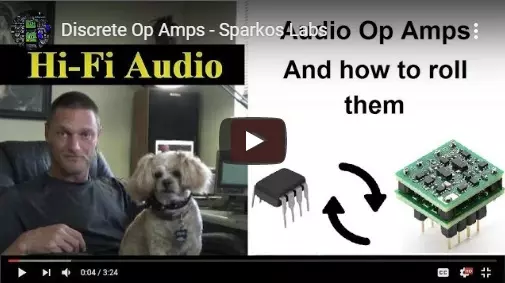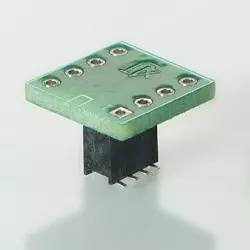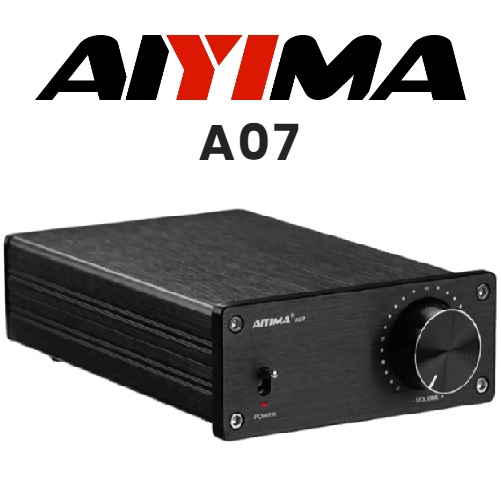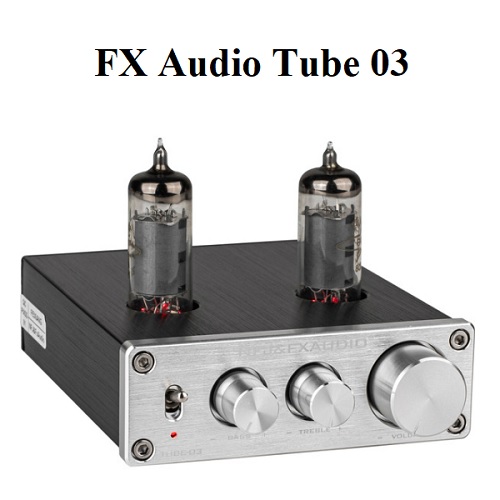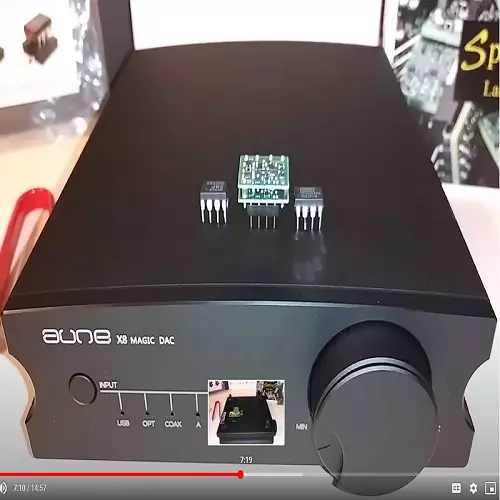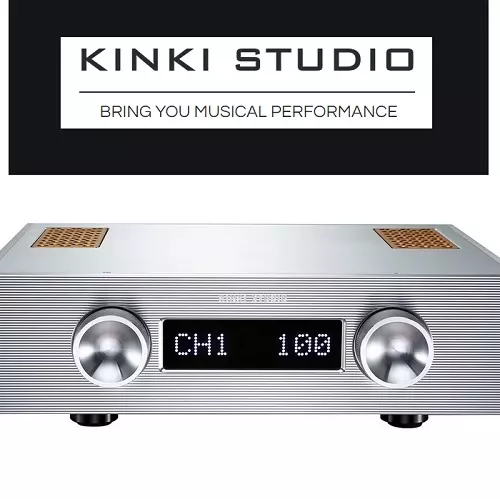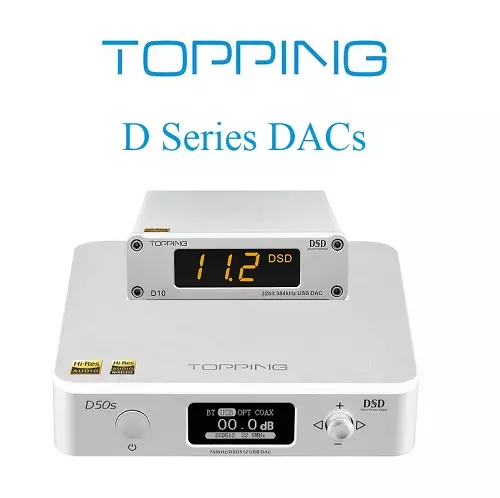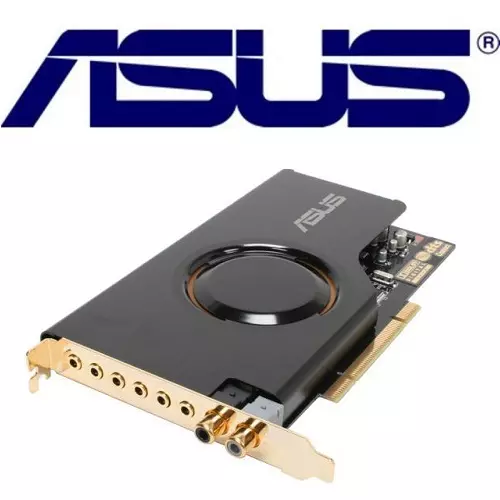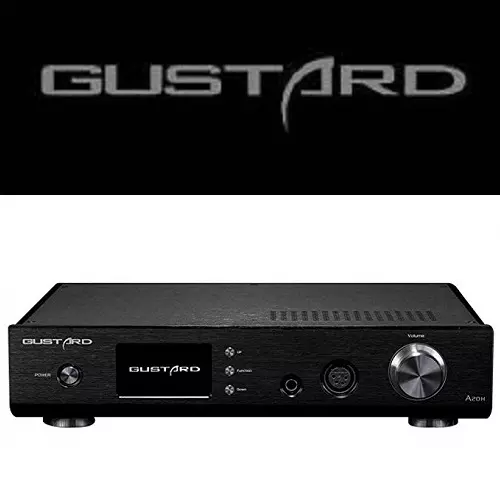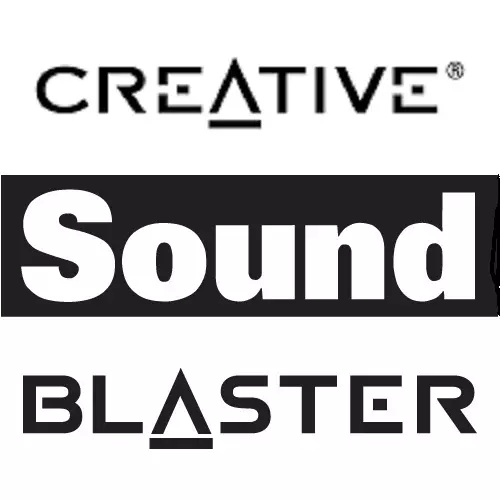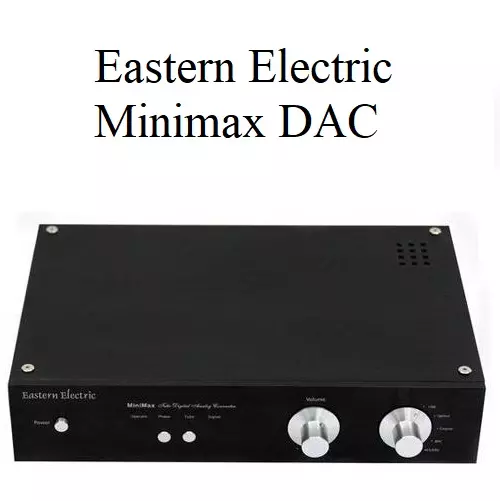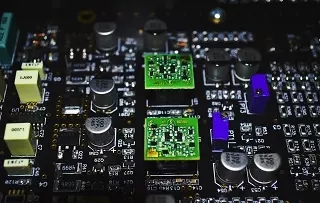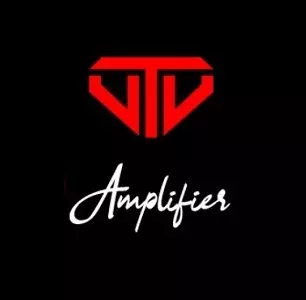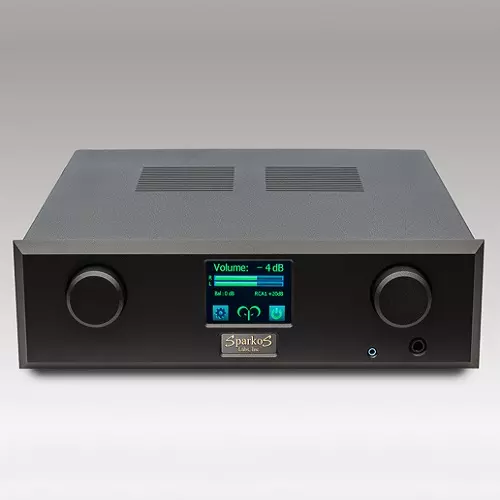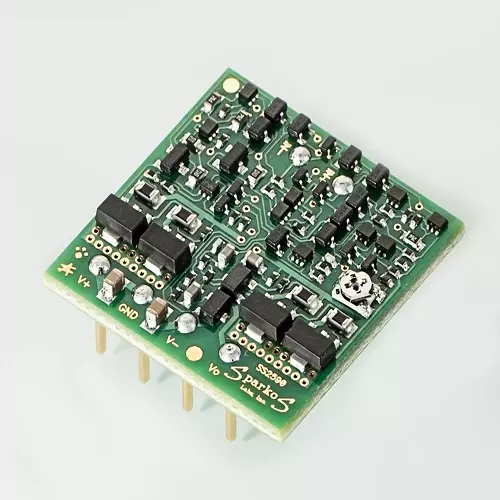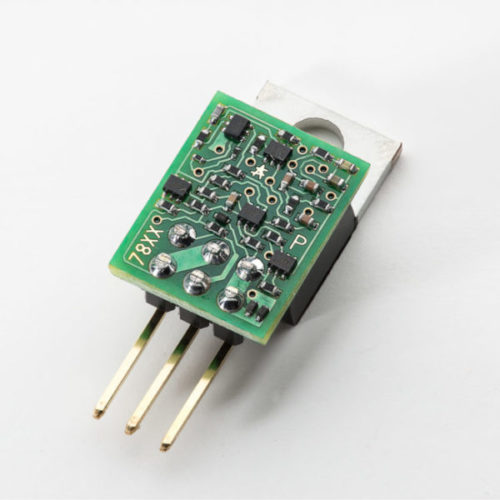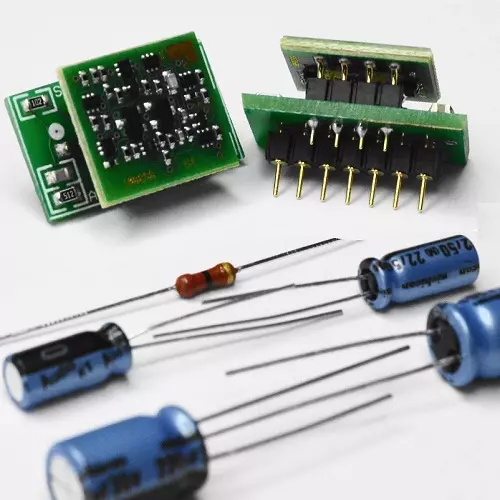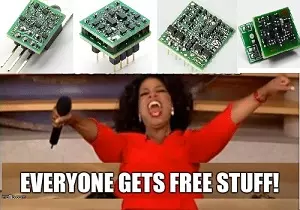Discrete Op Amps For Amplifying Audio Signals
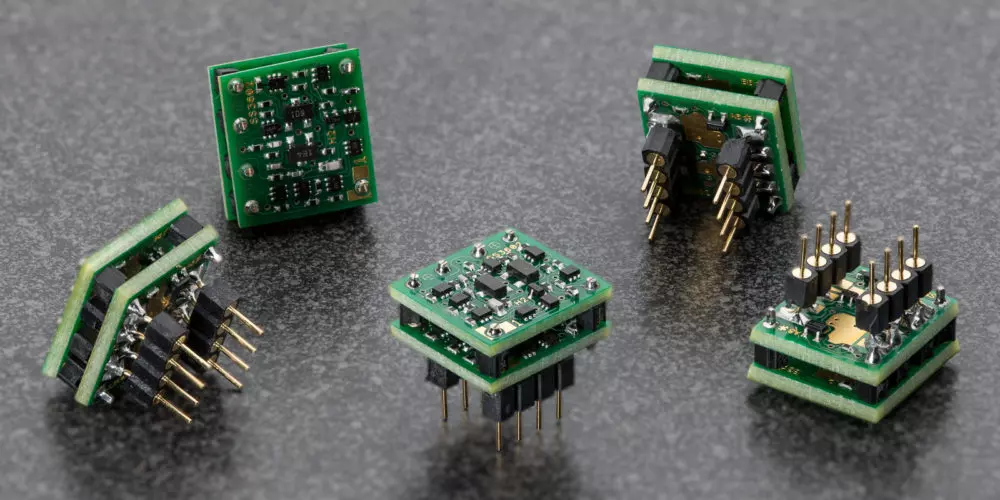
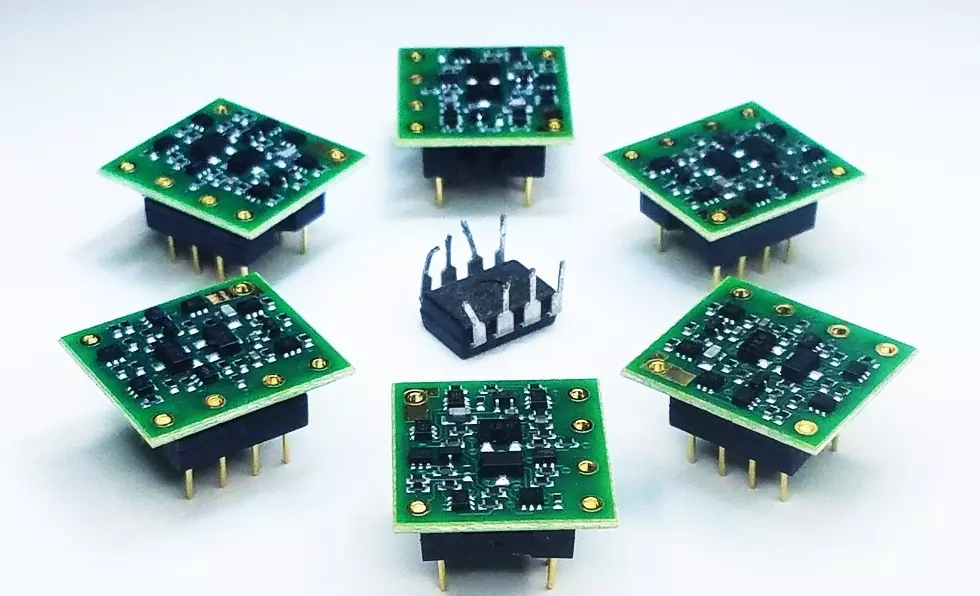
IC op amps are dead. And we killed them.
Op amps are a key component for processing and amplifying audio signals. They can be found in virtually all audio gear in the form of tiny integrated circuits (IC's) like the one laying on its back in the picture. They also come with all of the pitfalls and shortcomings that IC op amps have, like limited power dissapation and crummy compensation capacitors. Discrete op amps do not have these limitations, and are a vastly superior op amp for amplifying audio signals than their IC counterparts are. They can run much higher power, have much deeper class A bias, and deliver a much more realistic and detailed sound. Discrete op amps also permit the use of high quality compensation capacitors, and allow for two pole compensation schemes which are impossible to implement in IC designs. All of this translates into a more detailed and engaging listening experience with better imaging and soundstaging than IC op amps can deliver. In short, discrete designs are the best op amp for audio.
Op amp upgrading how-to video.
This video will explain the ins and outs of discrete op amps, what they are, how to install them, and why they are superior to IC op amps that your gear is currently using.
Have a watch, and enjoy.
Taking your gear to the next level.
Discrete op amp installation in most gear is simple, requires no soldering, and is plug and play. Simply remove the IC op amps from their sockets, install the discretes in their place, and then prepare yourself for audio bliss. The explainer video above illustrates the process and explains why discrete op amps are the best op amp for amplifying audio signals. And of course we are here to answer all of your questions and walk you through the process together if you like. Contact us today, and we will gladly assist you. Just know that when you submit a contact form to Sparkos Labs, you will get a response from Sparko himself.
SS3602 Dual Discrete Op Amp
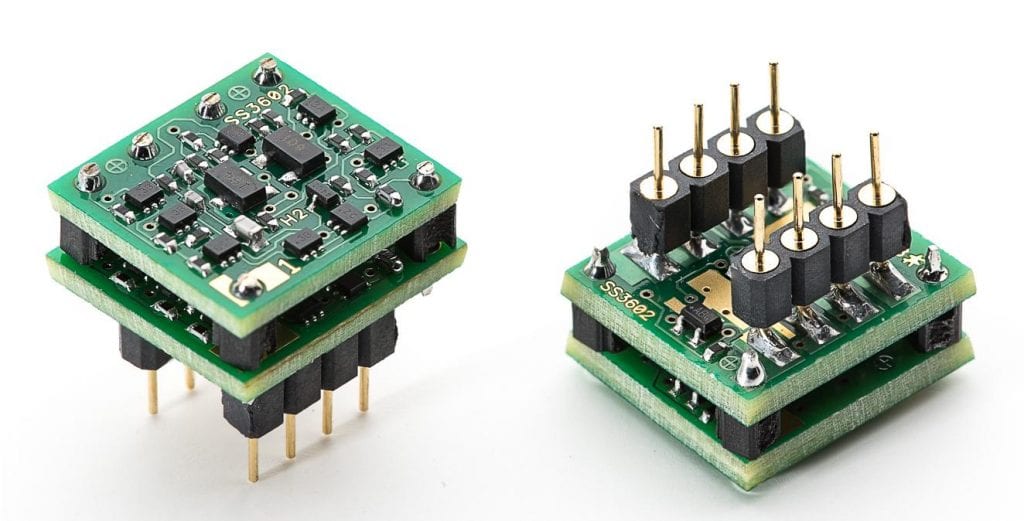
SS3601 Single Discrete Op Amp
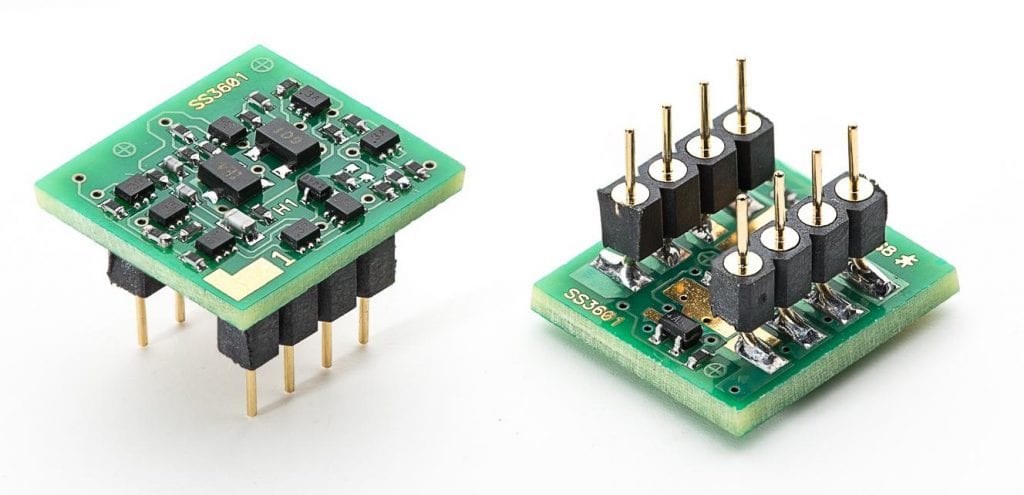
Our discrete op amps are very popular with and have been reviewed in the following gear.
Our discrete devices are used in the following manufacturers DACs and Hypex based Power Amplifiers.

The folks on Head-Fi know whats up with these devices. Check out our Head-Fi product showcase.


Have questions about your gear and what discrete op amps you need to upgrade it? Contact us today, and Sparko himself will help you out.
Distortion Measurements:
We designed these devices to be as sonically transparent as possible. This means that the op amp amplifies the incoming signal, and produces an exact, larger copy at the output without coloring the sound or creating any distortion products (THD).
In other words, we sought to make these devices behave like the proverbial "piece of wire with gain".
The following plots were independently generated by ATM Audio of Spain. The way to interpret these plots is to know that the large spike in the middle is the input signal. Any other spikes to the right of it are things that the op amp "added to the sound" (The coloration or distortion products) . Those smaller spikes to right represent things that came out of the op amp, but didn't go into it.
Our intent was to produce an op amp that did no such thing. And we came pretty darn close. It should be noted, that not all manufacturers adhere to this design philosophy, and that some will purposefully add coloration and distortion to their devices to alter how they sound. And, hey, that's cool too. We aren't here to begrudge anyone's design philosophy. We are rather just trying to illustrate ours with some objective measurements.
The link to the original blog post by ATM audio who generated these plots can be found here.
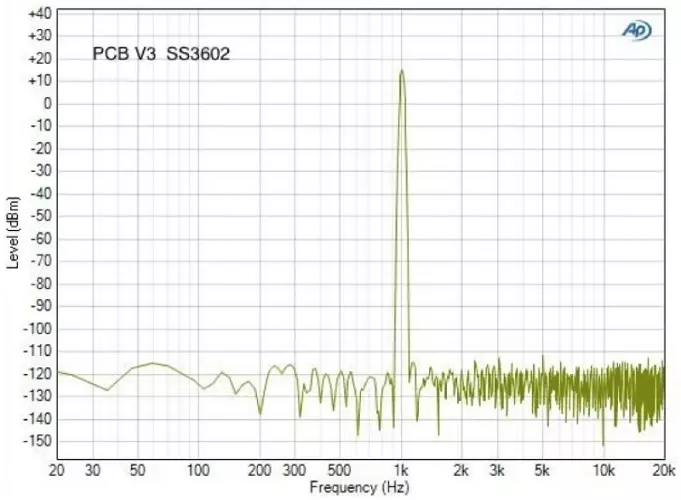
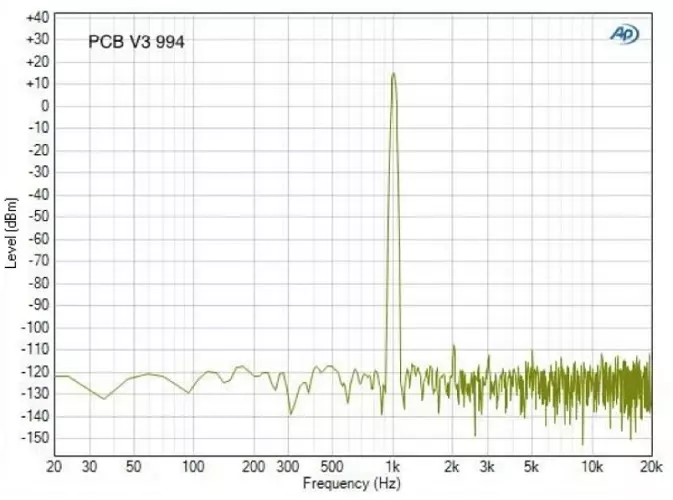
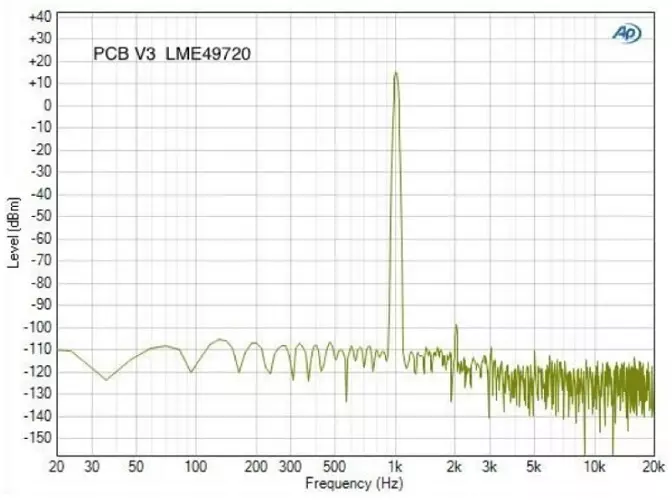
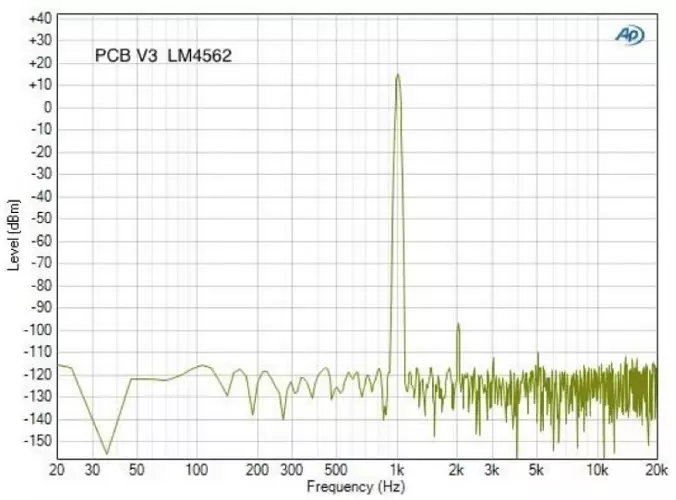
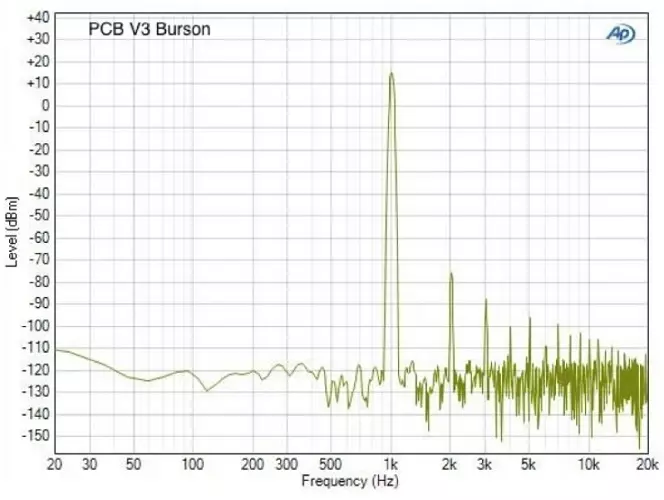
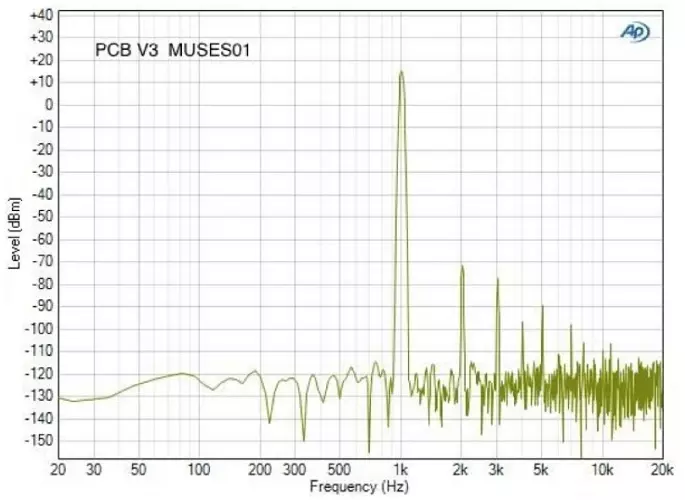
Discrete op amp nitty gritty:
The SS3601 / SS3602 discrete op amps will outperform virtually all audio grade monolithic IC op amps in open loop gain, noise performance, output current, and magnitude of class A bias current. Even the coveted OPA627 monolithic op amp, with a price tag of over 25 dollars, has 30dB less gain and around twice the noise of these discrete op amps. The table below details the superior performance of the Sparkos Labs discrete op amps to an array of audio grade monolithic IC op amps.
Overview:
All of Sparkos Labs discrete op amps are based on Lin 3 Stage topology consisting of an input stage differential pair, a gain (VAS) stage, and an output stage all biased in class A mode with two pole compensation. All active devices are Bipolar Junction Transistors (BJTs) for the greatest linearity and agility that any silicon device has to offer. The devices are fully protected from over current conditions by active current limit circuitry in the output and gain stages, as well as being protected from large differential input voltages by back to back high-speed schottky diodes across the inputs.
Input Stage:
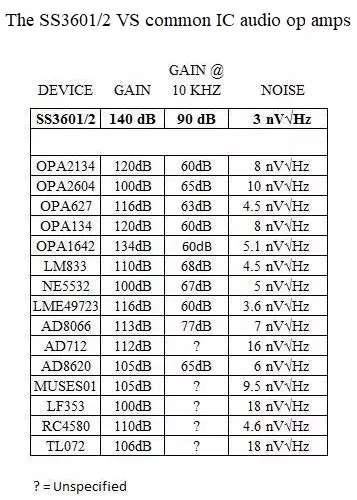
Gain (VAS) Stage:
The gain stage of the device is a cascode loaded Darlington for the highest linearity and open loop gain possible. The cascode biasing voltage is derived from precision shunt references, which have a much lower dynamic impedance and lower noise than the low voltage zener diodes which are commonly used to derive this bias voltage. The gain stage is current limited by diode clamping action as opposed to a feedback action, which results in greater stability during clip.
Output Stage:
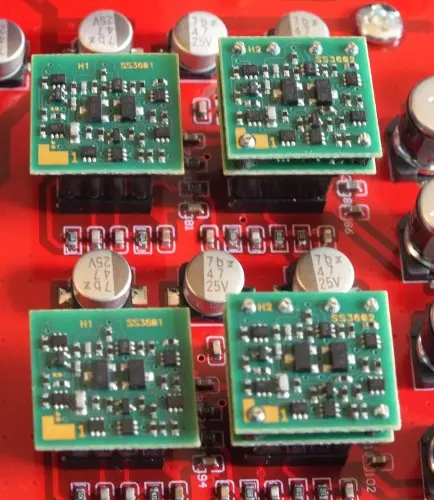
Compensation:
All of Sparkos Labs discrete op amps employ a uniquely implemented 2 pole compensation scheme that is extremely tolerant of capacitive loading. This allows these discrete op amps to be dropped into virtually any circuit arrangement and work without any stability issues.
Two pole compensation, despite its superiority to single pole schemes, is not often used in monolithic op amps due to the difficulty in fabricating the 2 capacitors at minimum that are required to implement it. Capacitors inside of monolithics consume a large amount of the die area, and are therefore kept to a minimum in both capacitor value and quantity. The amount of capacitance required for at least one of the two capacitors in a 2 pole scheme tends be impossibly large for monolithic designs. Even if the die area were available for two capacitors. Beings how the Sparkos Labs discrete op amps employ 3 capacitors for compensation, they are impossible to fabricate as a monolithic, and are only possible as a discrete op amp. Such are the reasons that discrete op amps are the best op amp for amplifying audio signals.
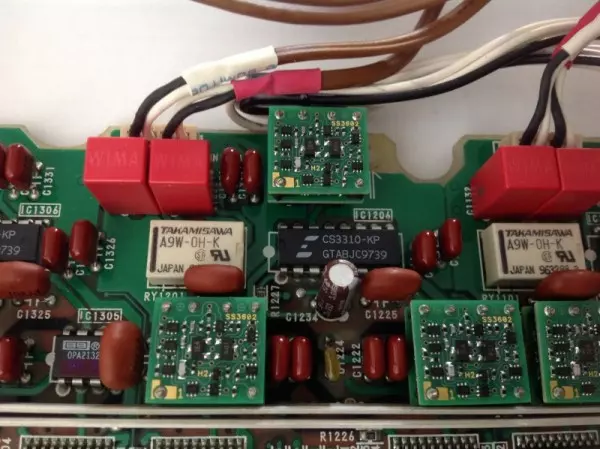
Compensation in ICs:
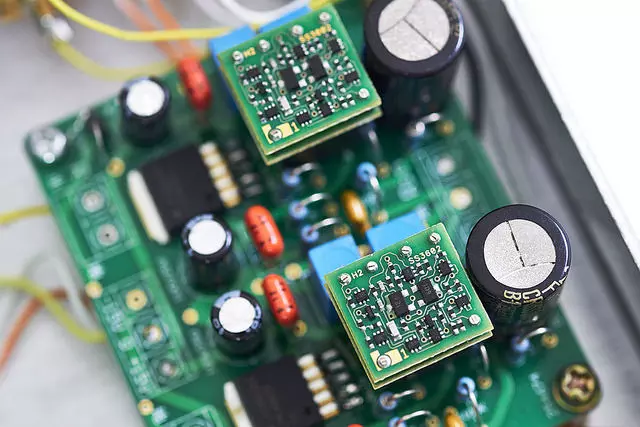
SS3601 Single
Specifications:
- Full Data Sheet Available.
- 140 dB Open Loop Gain.
- 415nV RMS (2.9nV√HZ) Noise to 20KHZ.
- +/- 18 Vcc Max.
- 15mA Class A Output Current.
- 65mA Max Output Current.
- 14mA Supply Current.
- < 300µV Typical Offset.
Features:
- Best Op Amp For Amplifying Audio Signals.
- Available In Single Or Dual.
- DIP8 Compatible Package.
- Circular Machined Gold Plated Pins.
- Smallest Discrete Op Amp On The Market.
- 100% Class A Biasing.
- Two Pole Compensation.
- NPO Capacitors.
- 1% Metal Film Resistors.
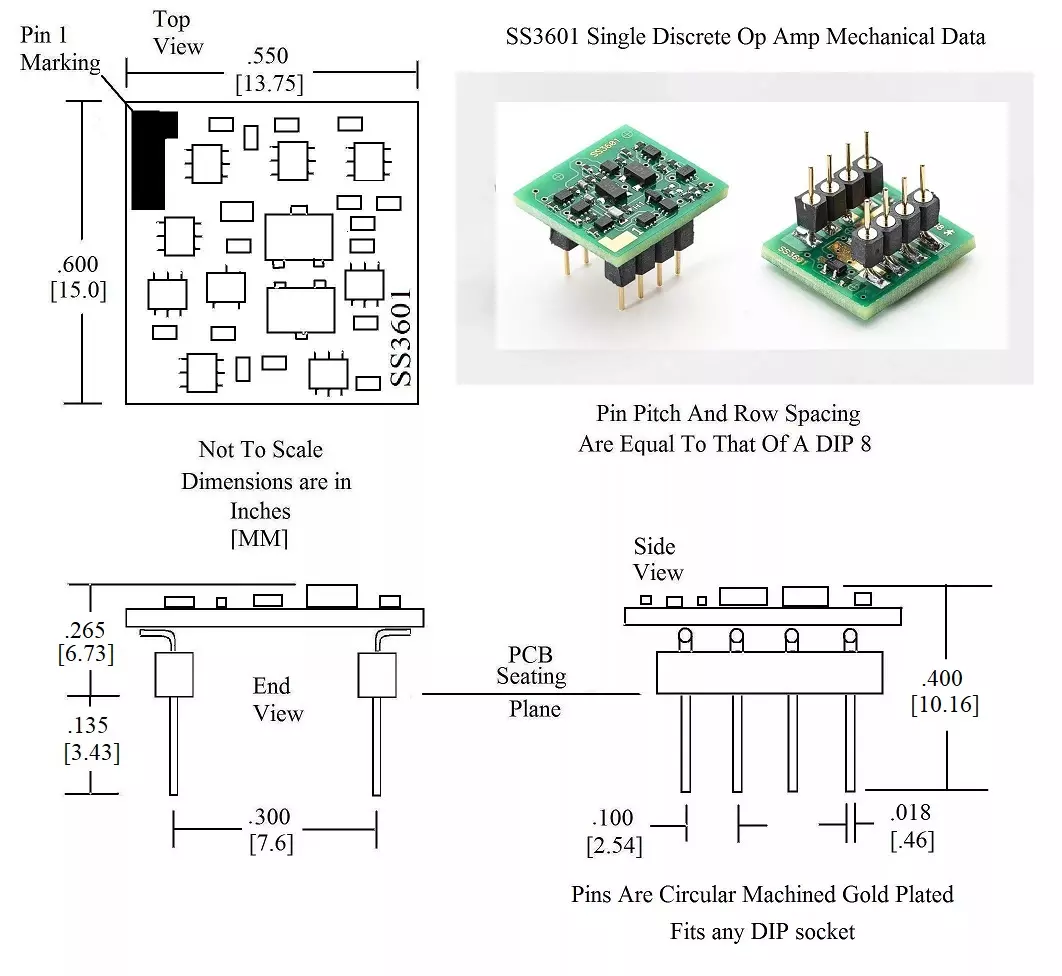
SS3602 Dual
Applications:
- Preamps.
- DACs.
- Compressors.
- Sound Cards.
- Gain Stages.
- Mic Amplifiers.
- RIAA Amplifiers.
- Crossovers / Filters.
- Mixers.
- Line Drivers.
- Line Receivers.
- Any Op Amp In The Audio Path.
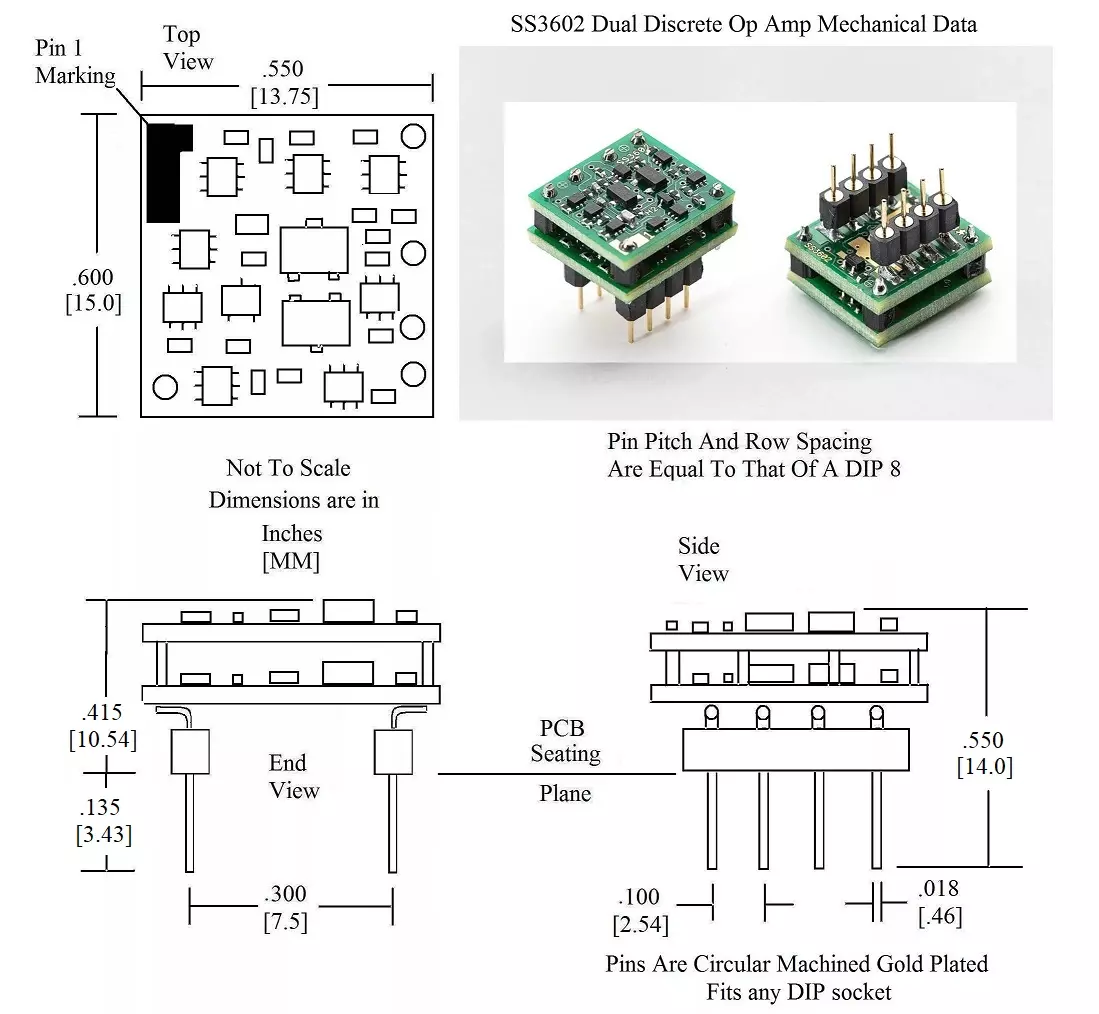
Check out our other products and gear.
Because the world needs to know.

